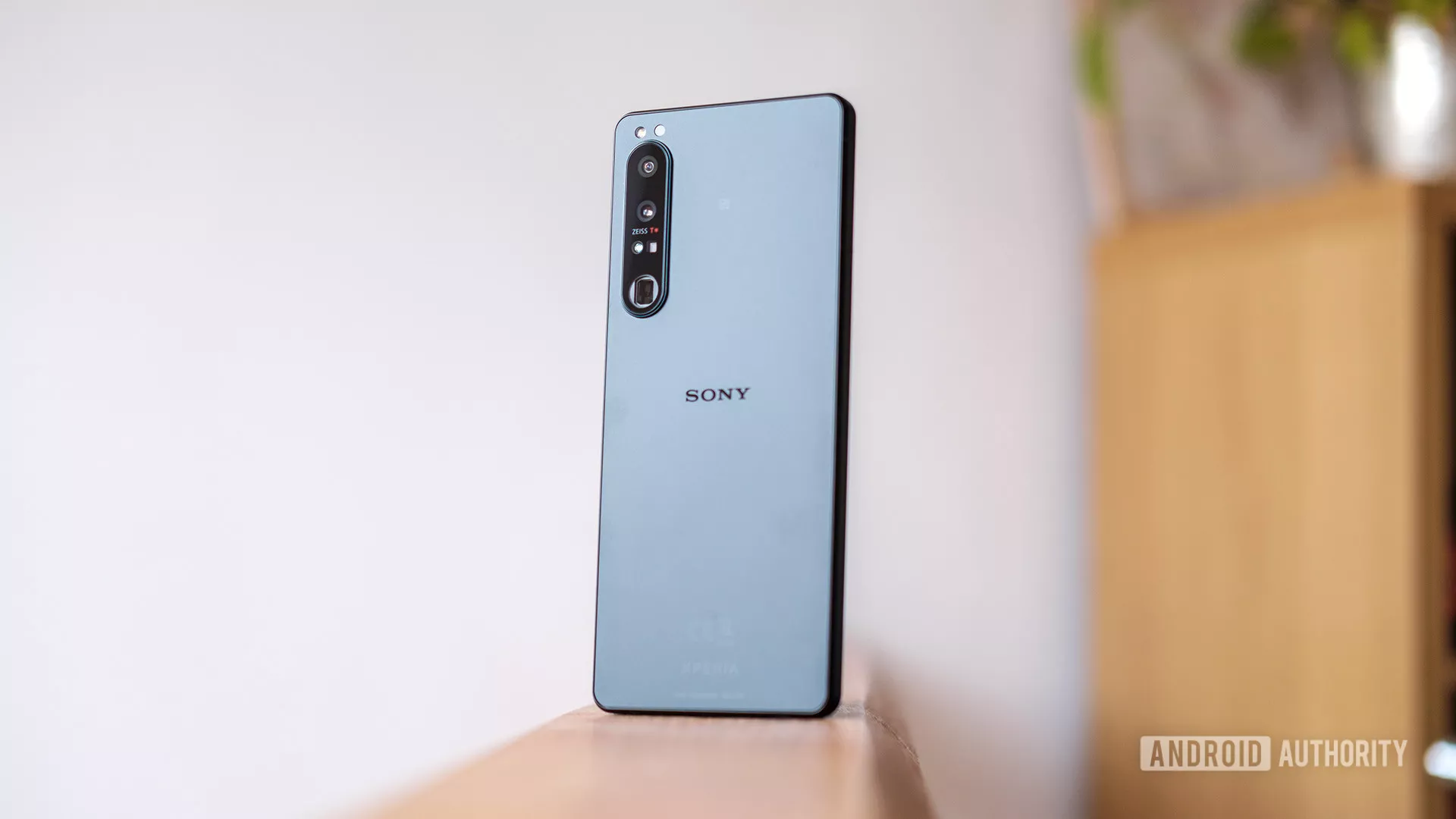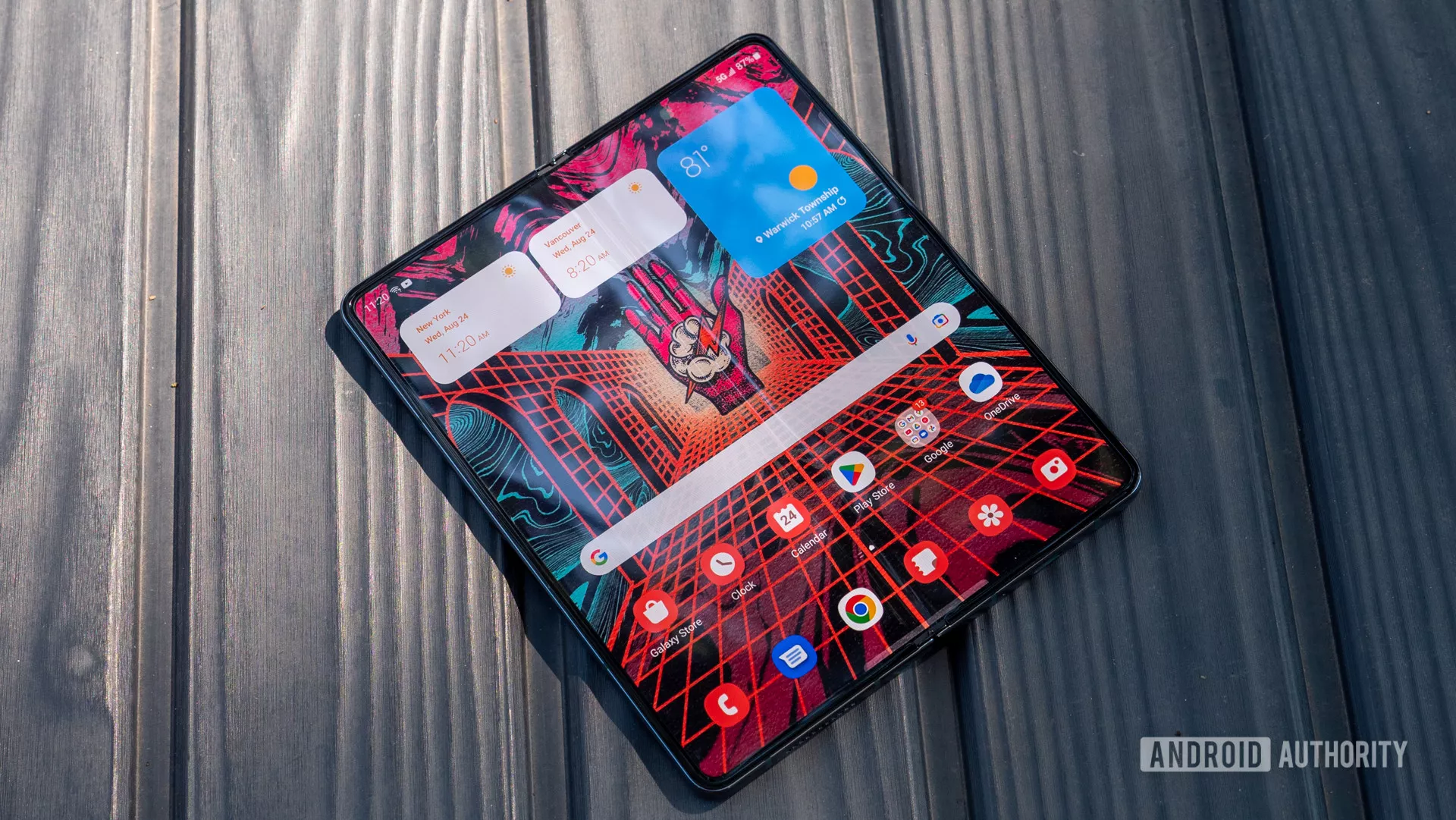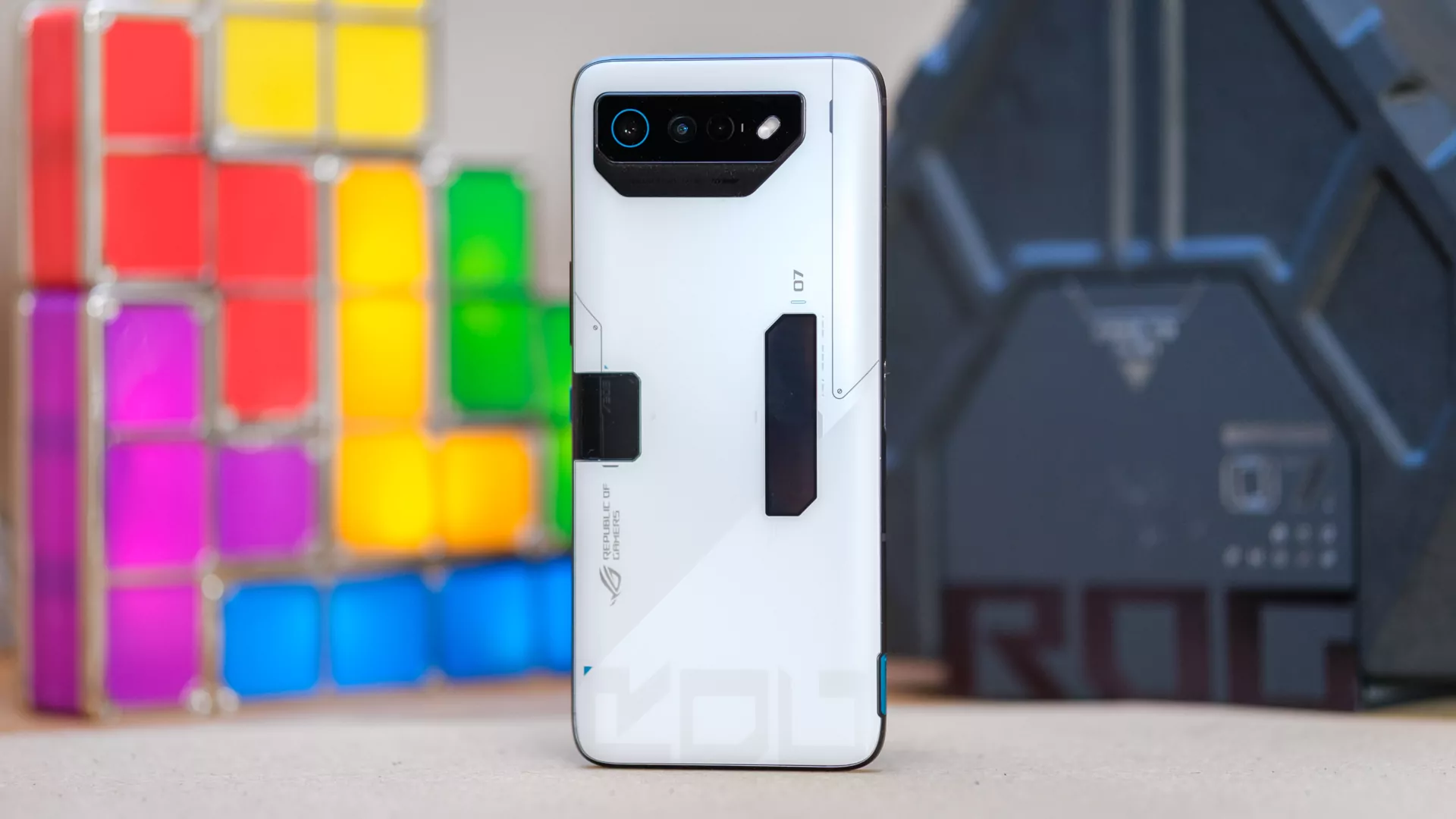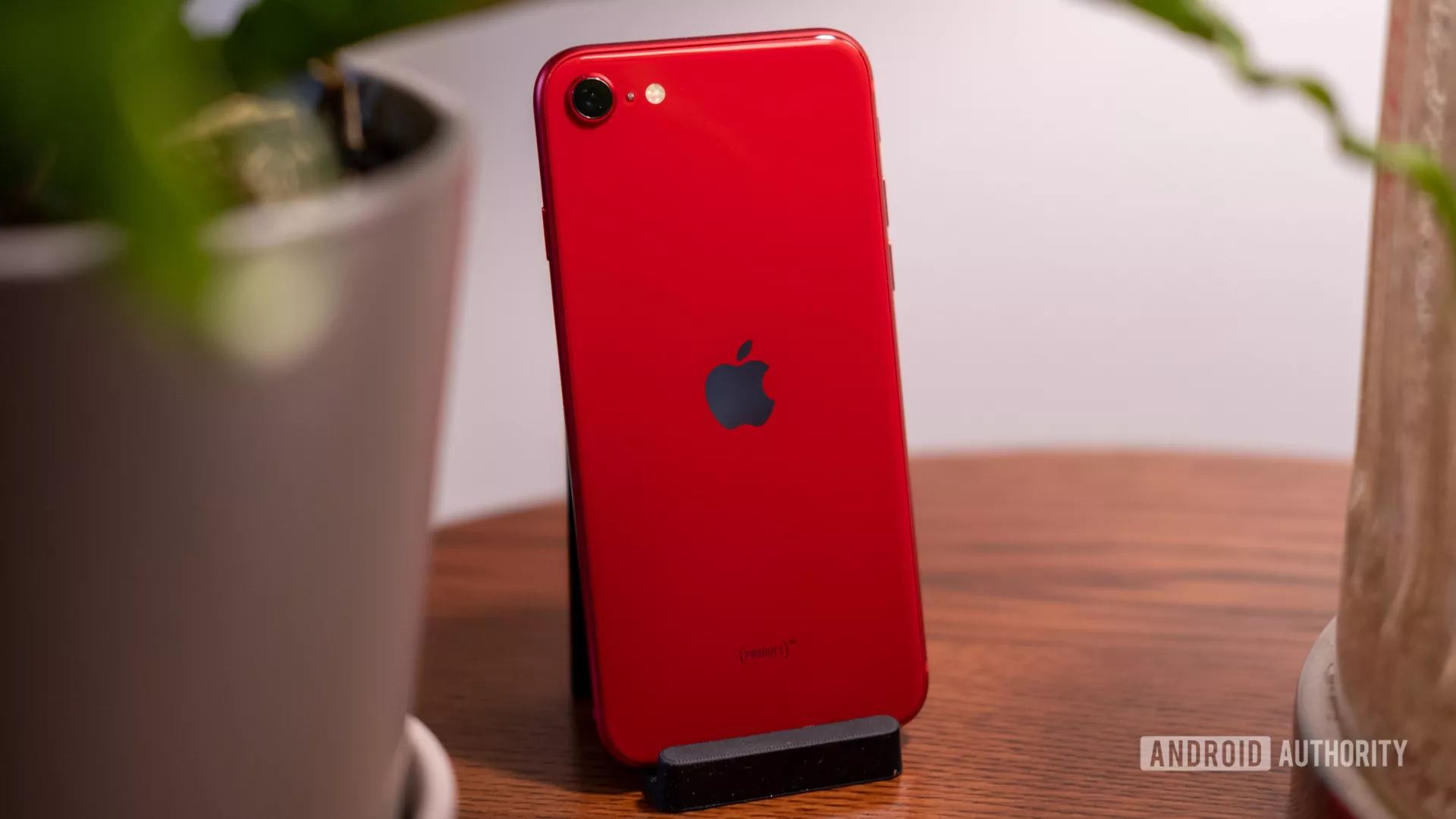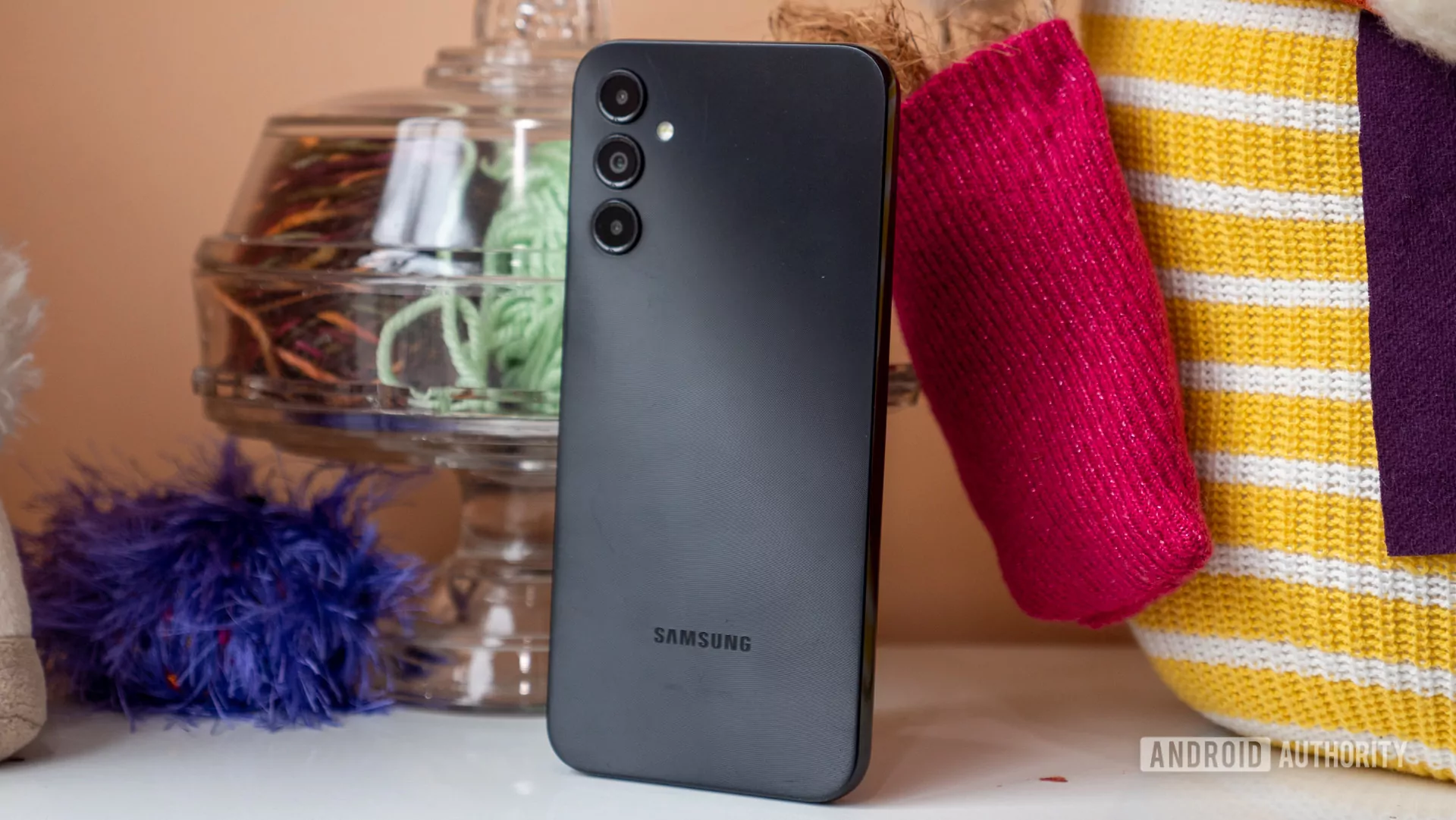Affiliate links on SoundGuys may earn us a commission. Learn more.
Best smartphones for audio
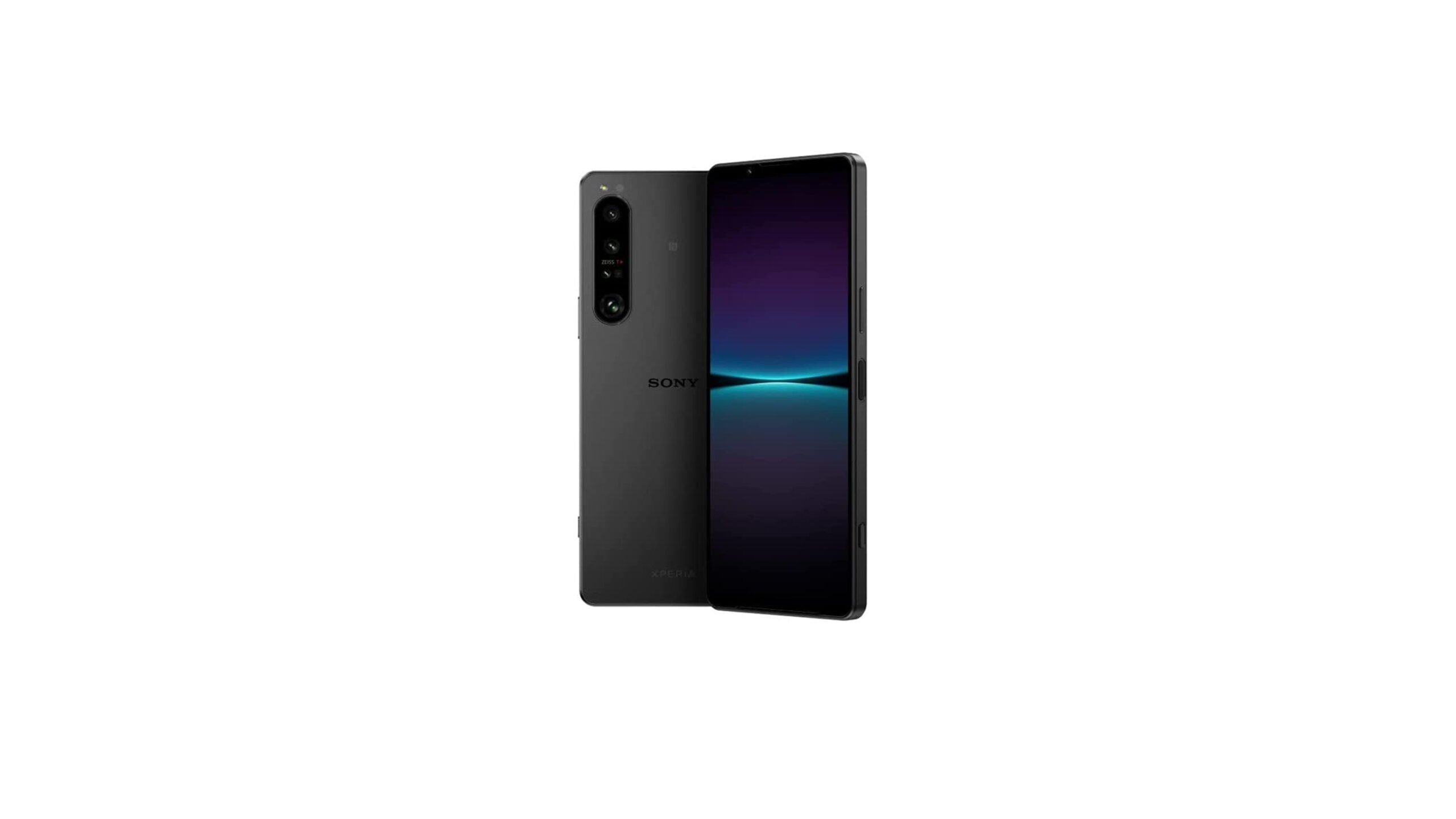

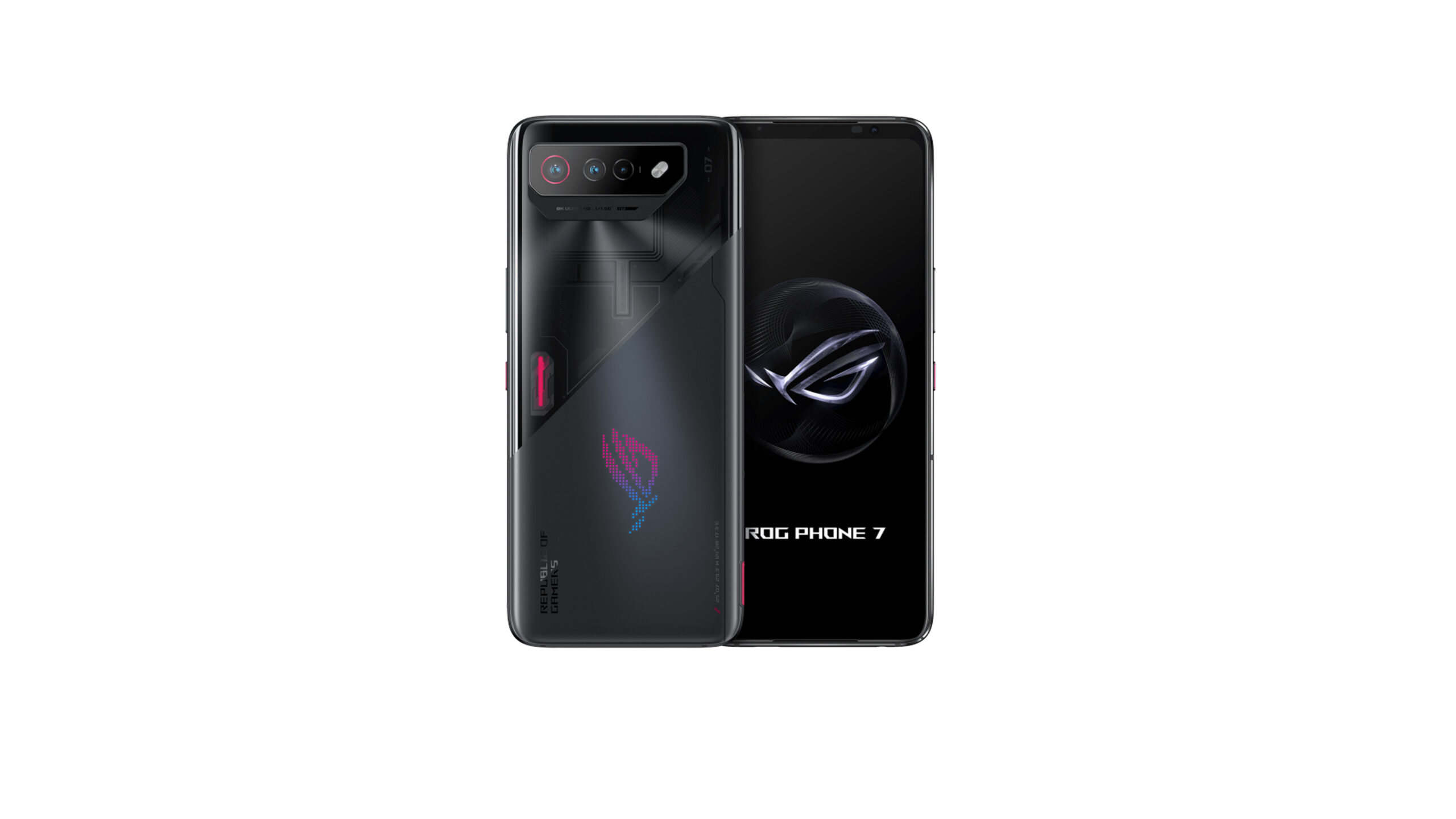
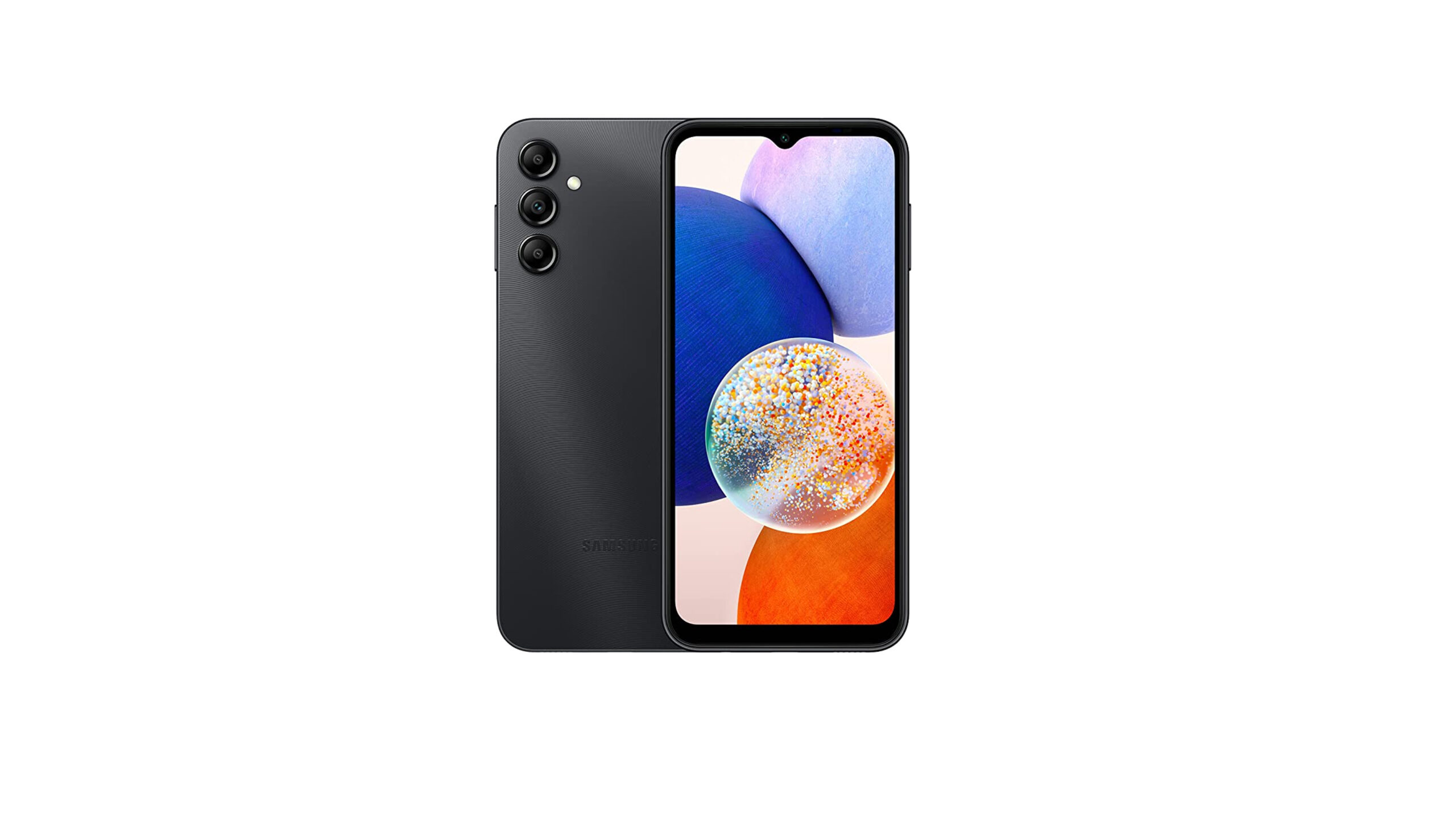
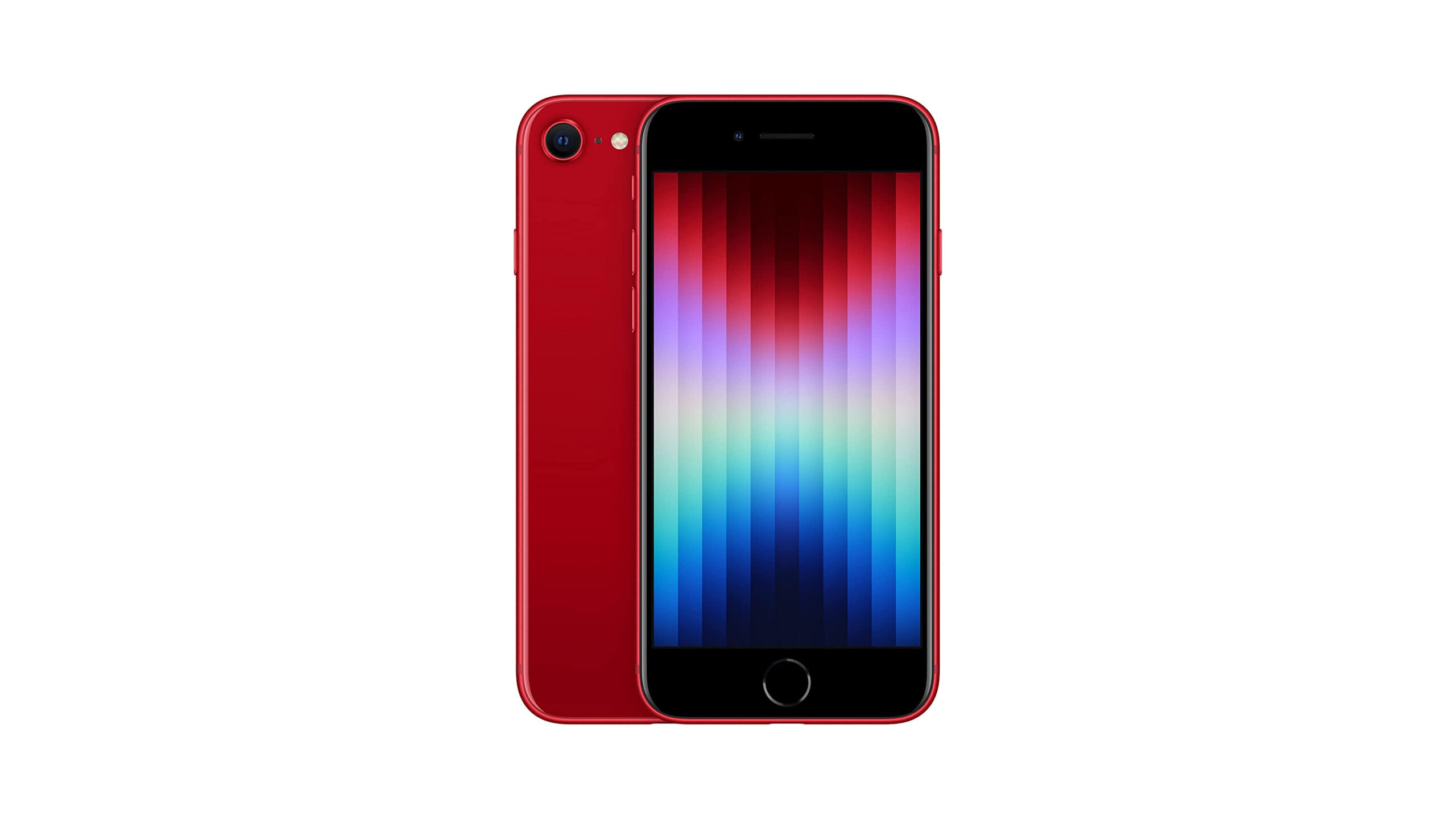
Now that the analog headphone jack has basically been left behind, it can be tough to find what you want in a smartphone. If you already have headphones you like, how do you navigate the morass of Bluetooth codecs, headset support, and dongles? You could get USB-C headphones, but that’s a lot of money for little return. Plus, that market is pretty sparse in terms of offerings.
Most phones on the market are nearly perfect when it comes to wired listening, but our best suggestion is to grab one of the phones below. They’ll provide you the best future-proofing on the market, with some killer features to match.
If all phones are nearly perfect, why make this list?
The truth of the matter is, this list exists for people who want to to actually know what they’re getting into when they buy their next handset. There are phones that aren’t all that great when it comes to audio, and there are others that have some strange foibles in this department that could be a dealbreaker for you. But you can’t know that until you either buy the device for a lot of money, or read this article for free.
Editor’s note: this list was updated May 16, 2023 to include all new picks, bring formatting in line with current standards, and make sure the explanatory content was all still correct.
What you should know
In a poll of Android Authority readers, a majority of respondents still use wired headphones with their devices. Our position is if a device doesn’t satisfy the needs of a majority of people: that device is the wrong choice. Therefore, phones without headphones jacks will never make it on here.
While objectively collected data is all well and good, it doesn’t exactly tell you everything you need to know about a phone’s performance. If you bought a phone in the last 5 years, chances are near 100% it’s more than enough for you, unless it lacks a specific feature you want. Now that digital media’s performance has started to sail beyond the limits of our hearing perception, test results matter less and less—while features matter more and more. It’s extremely rare that one phone will sound much worse than another when used with popular streaming services.
| Headphone Jack? | Frequency response | Dynamic Range | Total Harmonic Distortion | Noise floor | Speaker volume | |
|---|---|---|---|---|---|---|
Apple iPhone XS Max | Headphone Jack? No | Frequency response +0.1 / -0 dB | Dynamic Range 98.9dBA | Total Harmonic Distortion 0.0023% | Noise floor -99.5dBA | Speaker volume 76dB |
Asus Zenfone 6 | Headphone Jack? Yes | Frequency response +0.05 / -0.17 dB | Dynamic Range 83.2dBA | Total Harmonic Distortion 0.001% | Noise floor -83dBA | Speaker volume 82.2dB |
Google Pixel 3 | Headphone Jack? No | Frequency response +0.1/ -0 dB | Dynamic Range 99.3dBA | Total Harmonic Distortion 0.0026% | Noise floor -99.7dBA | Speaker volume 75.5dB |
Google Pixel 3a XL | Headphone Jack? Yes | Frequency response +0 / -0.34 dB | Dynamic Range 99.8dBA | Total Harmonic Distortion 0.0023% | Noise floor -99.8dBA | Speaker volume 74.4dB |
Google Pixel 3 XL | Headphone Jack? No | Frequency response +0.1 / -0 dB | Dynamic Range 99.2dBA | Total Harmonic Distortion 0.0026% | Noise floor -99.7dBA | Speaker volume 76.8dB |
Google Pixel 4 | Headphone Jack? No | Frequency response 0 / -0.1 dB | Dynamic Range 102.2dBA | Total Harmonic Distortion 0.001% | Noise floor -102.2dBA | Speaker volume 84.2dB |
Google Pixel 4XL | Headphone Jack? No | Frequency response 0 / -0.11 dB | Dynamic Range 103.6dBA | Total Harmonic Distortion 0.0013% | Noise floor -103.6dBA | Speaker volume 84.2dB |
LG G8 ThinQ | Headphone Jack? Yes | Frequency response +0.01 / -0.06 dB | Dynamic Range 98.6dBA | Total Harmonic Distortion 0.0019% | Noise floor -98.6dBA | Speaker volume 82.1dB |
LG G8X | Headphone Jack? Yes | Frequency response +0.04 / -0.12 dB | Dynamic Range 99dBA | Total Harmonic Distortion 0.0016% | Noise floor -99dBA | Speaker volume 88.5dB |
LG V60 | Headphone Jack? Yes | Frequency response +0.03 / -0.11 dB | Dynamic Range 100.1dBA | Total Harmonic Distortion 0.00173% | Noise floor -100.1dBA | Speaker volume 87.9dB |
OnePlus 6T | Headphone Jack? No | Frequency response +0 / -0.1 dB | Dynamic Range 97.7dBA | Total Harmonic Distortion 0.001% | Noise floor -97.6dBA | Speaker volume 72.9dB |
OnePlus 7 Pro | Headphone Jack? No | Frequency response +0 / -0.1 dB | Dynamic Range 97.7dBA | Total Harmonic Distortion 0.0009% | Noise floor -97.7dBA | Speaker volume 72.9dB |
Samsung Galaxy S10 Plus | Headphone Jack? Yes | Frequency response +0.01 / -0.06 dB | Dynamic Range 96.9dBA | Total Harmonic Distortion 0.0015% | Noise floor -96.9dBA | Speaker volume 76.5dB |
Samsung Galaxy S10e | Headphone Jack? Yes | Frequency response +0 / -0.39 dB | Dynamic Range 96.6dBA | Total Harmonic Distortion 0.0025% | Noise floor -96.6dBA | Speaker volume 76.5dB |
Sony Xperia 1 II | Headphone Jack? Yes | Frequency response +0.26 / -0.17 dB | Dynamic Range 100.4dBA | Total Harmonic Distortion 0.0024% | Noise floor -100.4dBA | Speaker volume 77.3dB |
Sony Xperia 1 | Headphone Jack? No | Frequency response +0.01 / -0.06 dB | Dynamic Range 100dBA | Total Harmonic Distortion 0.013% | Noise floor -100dBA | Speaker volume 89.3dB |
Xiaomi Mi Mix 3 | Headphone Jack? No | Frequency response +0 / -0.1 dB | Dynamic Range 101.4dBA | Total Harmonic Distortion 0.0012% | Noise floor -101.3dBA | Speaker volume 73.8dB |
ZTE Axon 10 Pro | Headphone Jack? Yes | Frequency response +0 / -0.1 dB | Dynamic Range 98.4dBA | Total Harmonic Distortion 0.003% | Noise floor -101.3dBA | Speaker volume 76.1dB |
When it comes to wired listening: the lower distortion and noise are, the better the result. Similarly, the lower the deviation found in testing frequency response is, the less your audio will be altered. While some people like to artfully tune their music, any component that isn’t the headphones or the software playing back the music shouldn’t affect the signal at all. Only deviations + / – 3dB will be noticeable at all.
Our tests are overkill.
Few phones have issues here, but it’s not unheard of for a modern phone to have some weird issues here (*cough* the original Pixel *cough*). The frequency response test is more pass/fail than anything.
It’s going to sound trite, but every single one of the phones listed here is all what we’d categorize as “perceptually perfect,” given their performance meets or exceeds what your average human can hear. However, they’re not actually perfect, and users with more power-hungry headphones may run into issues.
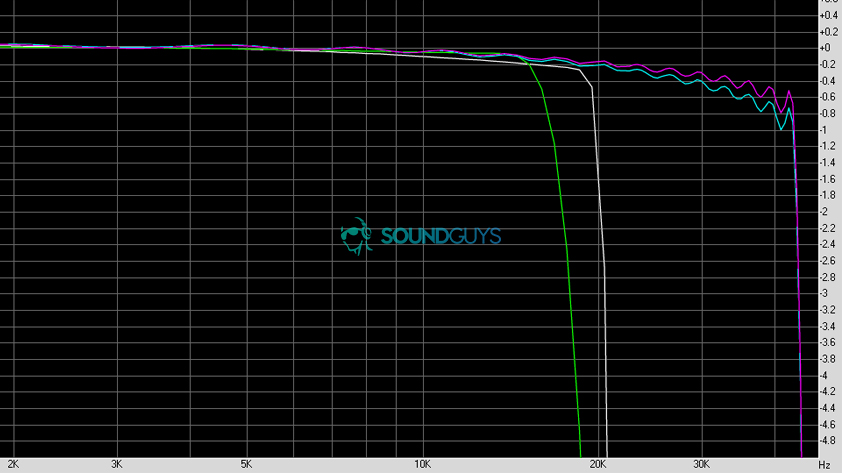
In our testing, we noticed that the phones with dongles (Apple iPhones, Google Pixel devices) refused to output sound at the specified sample rate. Why this happened we have no idea, but we were able to reproduce our results almost exactly between several different copies of each device with three testers. The upshot is that these phones should have an easier time dispelling IM distortion, but the tradeoff is that it technically isn’t performing as well.
While you shouldn’t really be able to tell when you stream music, ultra-hardcore wired-listening-only audiophiles might be unimpressed with this. It’s just as well—that crowd should avoid dongles if they’re using power-hungry headphones anyway.
Those who want to use Bluetooth audio will have to make sure that their phones and headphones speak the same language, or codec. If they don’t, it’s highly likely you won’t be able to enjoy your music as much as you could. All phones are not created equal with Bluetooth support, and it’s worth knowing what codecs you can use on your mobile.
| A2DP | AAC | aptX | aptX HD | LDAC | |
|---|---|---|---|---|---|
Google Pixel 3 | A2DP ✓ | AAC ✓ | aptX ✓ | aptX HD ✓ | LDAC ✓ |
LG V60 ThinQ | A2DP ✓ | AAC ✓ | aptX ✓ | aptX HD ✓ | LDAC ✓ |
Samsung Galaxy S9+ | A2DP ✓ | AAC ✓ | aptX ✓ | aptX HD ✓ | LDAC ✓ |
Nokia 8 | A2DP ✓ | AAC ✓ | aptX ✓ | aptX HD ✓ | LDAC |
Apple iPhone XS Max | A2DP ✓ | AAC ✓ | aptX | aptX HD | LDAC |
OnePlus 6T | A2DP ✓ | AAC ✓ | aptX ✓ | aptX HD ✓ | LDAC ✓ |
Razer Phone 2 | A2DP ✓ | AAC ✓ | aptX ✓ | aptX HD ✓ | LDAC ✓ |
Huawei Mate 20 Pro | A2DP ✓ | AAC ✓ | aptX ✓ | aptX HD ✓ | LDAC ✓ |
Sony Xperia XZ3 | A2DP ✓ | AAC ✓ | aptX ✓ | aptX HD ✓ | LDAC ✓ |
Sony XPERIA 1 II | A2DP ✓ | AAC ✓ | aptX ✓ | aptX HD ✓ | LDAC ✓ |
However, software updates can change the checkmarks on this list, so prepare for it to change over time. Many of these phones will end up supporting aptX and LDAC through updates to Android over time, while Apple’s support remains beholden to a tough-to-predict update schedule.
The best smartphone for music is the Sony Xperia 1 IV
On paper, the Sony Xperia 1 V is probably the best wired listening option for people in the market for an Android phone. This Android phone came out last year, and it’s expensive successor is just around the corner, but it features a headphone jack—a rarity in top-of-the-line products nowadays—as well as a host of audio software features.
In addition to a gorgeous screen, a Snapdragon 8 Gen 1 chip, and huge 5,000mAh battery, the Xperia 1 V is tailored to content creators of all varieties. There’s tons of video and photo features, and the phone comes loaded with an app called Music Pro, which is a paid service allowing you to record vocal and instrument audio and upload them to the cloud for processing. Basically, it’s a great phone for listening to podcasts and making podcasts.


The Samsung Galaxy Z Fold 4
Like high-end Samsung phones, the Galaxy Z Fold 4 lacks a headphone jack. However, it has one thing that may make up for it—especially if you don’t like wearing earbuds or headphones. This foldable phone features a stereo speaker array, so you can still get a more cinematic experience when you’re watching movies and YouTube videos.
This is an extremely expensive phone, starting at $1,799 USD, but for the money you get a fancy folding screen that opens into a extra wide mini tablet form factor. This phone features two screens—a 6.2-inch one on the outside when it’s folded up, and a 7.6-inch one on the inside when you open it up—and they’re both gorgeous. The rear firing cameras get an upgrade too—there’s a 50MP main camera, a 10MP 3x telephoto lens, and a 12MP ultrawide lens—and our colleagues over at Android Authority seem to think they’re pretty swell.


ASUS ROG Phone 7
If you’re in the market for a gaming phone, there aren’t a ton of options. Even fewer feature a headphone jack. Luckily the ASUS ROG Phone 7 is one of the best gaming phones on the market, and it still supports 3.5mm wired audio.
This mammoth phone packs in a gorgeous screen, great gaming performance, and numerous hardware niceties like capacitive shoulder buttons and multiple USB-C ports (one on the side and one on the bottom). It’s pretty expensive, but most flagship phones are these days—and almost none of them support dongle-free wired audio.

Apple fan? Get the iPhone SE
I’m just going to come out and say it: Apple is bad for the audio market. Even worse now that its phones do not ship with a dongle any longer. Not only is its Bluetooth compatibility limited to AAC, but its war against the 3.5mm jack also led to the most foolish smartphone design memes of the day. It’s frankly irritating that people look to it as some sort of market leader, when it really only fits the description if you’re looking at how much tax it dodges in the US.
However, the iPhone SE is a special phone that is a credible contender for the value phone crown. So as much as it pains me to praise it: this is the phone to get if you don’t need a headphone jack, but do need to save some coin. There are some notable advantages, too—like Apple’s H2 chip allowing for much more stable connections with other Apple peripherals and Beats headphones. Additionally, if you want to get into the world of AirPods or AirPods Pro: this is the phone to get.
Because of refreshed in 2022, this $429 USD phone is in close contention with Google Pixel A-series phones (which we no longer include here, after they dropped the headphone jack). The “not having a headphone jack” thing is a tough hurdle to overcome, but if you’re in the Apple ecosystem, no phone has one, so you may as well save the money.
We still aren’t fans of how Apple treats the audio industry, however.
.jpg?X-Amz-Content-Sha256=UNSIGNED-PAYLOAD&X-Amz-Algorithm=AWS4-HMAC-SHA256&X-Amz-Credential=XSKNWXBO6X4FQX75L363%2F20230627%2Fnyc3%2Fs3%2Faws4_request&X-Amz-Date=20230627T112928Z&X-Amz-SignedHeaders=host&X-Amz-Expires=3600&X-Amz-Signature=ed9c71c23ca926262e58917991f6dbb60dd5bfd582796873be3045f294952d61)
On a budget? Try the Samsung Galaxy A14 5G
If the last budget phone you saw that made you jump for joy was the Google Pixel 4a, you’ve got a new budget wired audio contender (finally). The Samsung Galaxy A14 5G is about as cheap as it comes these days, and yes, it has a headphone jack.
This phone starts at under $200 USD, and it brings a nice screen, a reliable camera, good performance. Our colleagues over at Android Authority thought the external speakers were pretty lackluster, but this phone has a headphone jack, so that won’t matter most of the time!

How we test phones
Using a dedicated interface, we used a 3.5mm to split 1/4 inch TRS connector Y-cable to measure the output of each phone. By using a piece of software called Room EQ Wizard, we’re able to measure things like dynamic range, distortion, noise, frequency response, and more. By logging these results, we can compare each phone against each other under the same test conditions with the same test files and the same equipment.
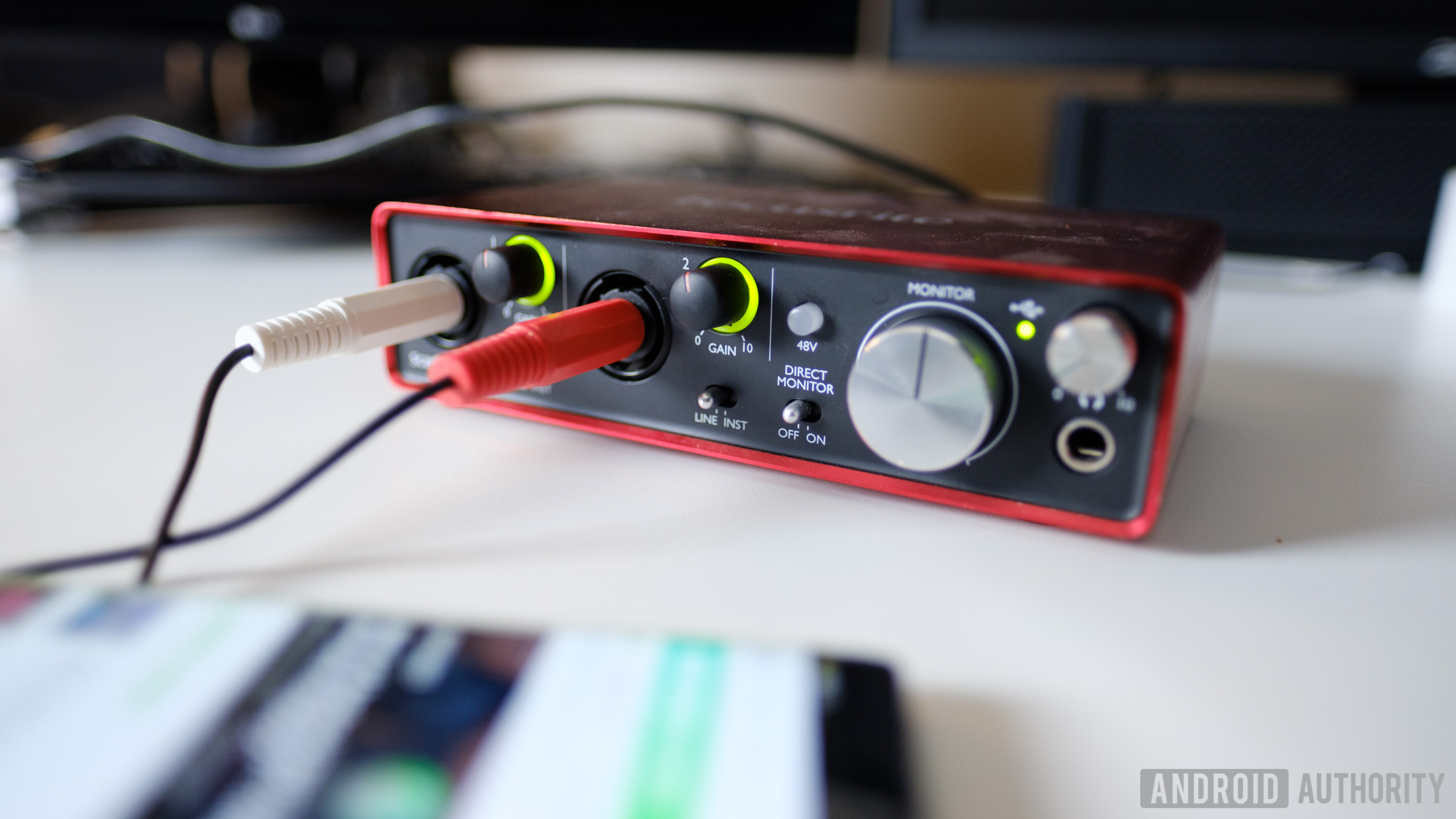
While you may think that this test is very involved: it really isn’t. There’s a lot of information you can glean from a simple 96kHz/24-bit test file, and in fact that’s all we used. We load the file onto the phones, play it back, and record the results. We did not use a higher-bitrate/higher-sample rate file because the data would mislead you into thinking it’s necessary. It’s not. CD quality sound is “only” 44.1kHz/16-bit, and that’s more than sufficient to satisfy the perceptual limits of the vast majority of humans on Earth. Our tests are overkill.
Because we didn’t test the stupidly high-bitrate/high-sample rate files, there’s a certain limit on how well each unit could have performed. While there’s some debate as to what reviewers should be testing at, I personally go with roughly double the highest common settings that most people will use. In this case, something that would meet or exceed CD quality, because no streaming service can do that currently.
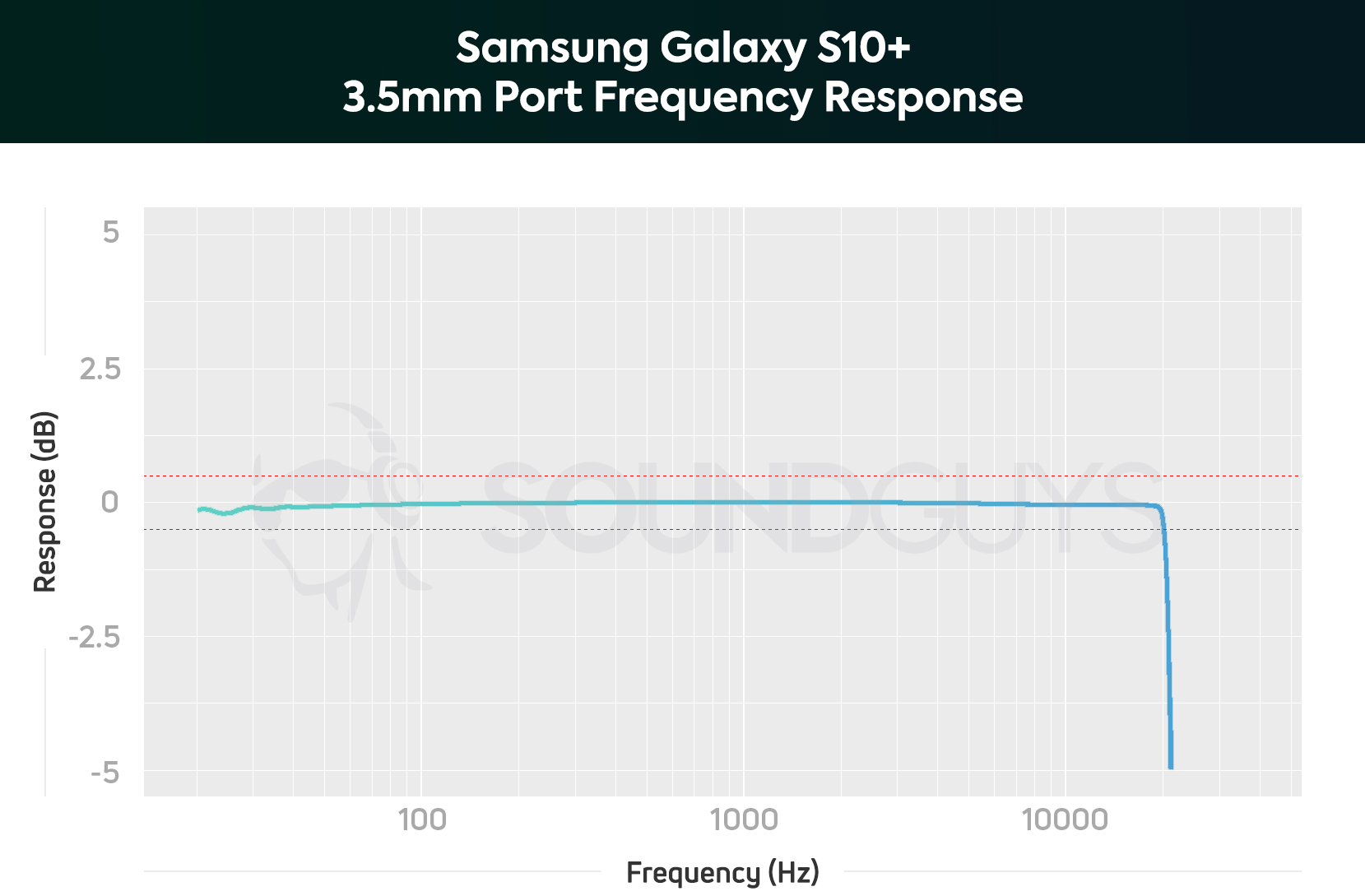
Speaker testing is fairly rudimentary, because any measurements we would normally give you would not apply to your normal usage, simply because their sizes and configurations lend themselves to interference from:
- air temperature differences
- outside noises (auditory masking)
- holding the phone in your hand
- nearby objects reflecting sound
- phone speaker features requiring a cavity to perform as intended
- phone speakers not adhering to any sensible standards and firing in different directions
By playing a pink noise sample at full volume, we can measure this with an electret microphone pointed directly at the phone. The front-facing units, on the whole, perform better than those on the bottom of the phone, given the sound is actually directed at the user. But trust me when I tell you, virtually all speakers tested suck out loud. You do not want them to be your primary, secondary, or even tertiary means of music consumption.
Obviously, the existence of extra features and other concerns like Bluetooth have to factor into our decisions, and we did that as well. However, these are generally present on the flagship phones and few others. While our testing pool was artificially limited, companies have to shell out big bucks for licensing Bluetooth profiles and codecs. It ends up being generally true that the less expensive smartphones will also only cover a few codecs, where the flagships will cover nearly all of them.
If you can wait on getting a new phone, always wait
Even though the release schedules are going to start slowing down now that the market is absolutely oversaturated with smartphones, a good rule to follow is only buy a phone if you absolutely need it. I say that, because these things are getting refreshed every 6-12 months, and sales happen often when new releases come out. Obviously, not all new releases are good for audio, but unless there’s some major feature you’re pining for, most smartphones will be pretty good anyway.
Also, never ever buy a phone at release if it’s close to Black Friday or the holiday season, because even new releases go on sale for these events. There’s no sense in overpaying for something if you can have it for cheaper.
If you need a headphone jack, there just aren’t that many options—usually you have to spring for super expensive niche devices, so it’s always a good idea to wait for a price drop.
